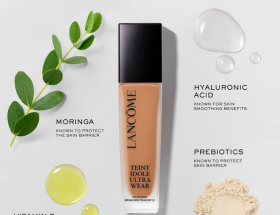The world of fashion is a captivating canvas where color plays a pivotal role in expressing our personality, mood, and style. Selecting the right color for your clothes is an art that requires an understanding of color theory, individual preferences, and the context in which the outfit will be worn. In this essay, we will delve into the intricacies of choosing the perfect colors for your clothes, exploring the significance of color psychology, harmonious combinations, and the impact of personal taste.

Understanding Color Psychology
Color psychology is the study of how colors influence human emotions and behaviors. Different colors evoke distinct feelings and convey various messages. Before diving into your closet or a shopping spree, it’s essential to consider the mood and impression you want to create with your outfit.
- Warm Colors: Reds, oranges, and yellows are warm colors that often evoke feelings of energy, passion, and positivity. These hues can add vibrancy to your ensemble and make a bold statement.
- Cool Colors: Blues, greens, and purples are cool colors associated with calmness, serenity, and sophistication. Wearing cool-toned outfits can create a soothing and composed appearance.
- Neutral Colors: Whites, blacks, grays, and browns are neutral colors that offer versatility and timelessness. Neutrals can be paired with almost any other color, making them essential for building a well-rounded wardrobe.
- Complementary Colors: Colors that are opposite each other on the color wheel, such as red and green or blue and orange, create contrast and visual interest. Complementary color combinations can be dynamic and eye-catching.

Harmonious Color Combinations
Creating harmonious color combinations is an art that requires an understanding of color relationships and balance. Harmonious color schemes can enhance the visual appeal of your outfit and ensure that the colors complement each other seamlessly.
- Monochromatic: This scheme involves using different shades and tints of a single color. Monochromatic outfits exude sophistication and elegance while maintaining a cohesive look.
- Analogous: Analogous colors are adjacent on the color wheel, such as blue, green, and teal. This combination creates a harmonious and visually pleasing effect.
- Triadic: Triadic colors are evenly spaced around the color wheel, forming a triangle. For example, red, blue, and yellow create a vibrant and balanced palette.
- Split-Complementary: This scheme combines a base color with two colors adjacent to its complementary color. For instance, pairing blue with orange-red and orange-yellow offers a balanced contrast.

Consider the Occasion and Context
The context in which you’ll be wearing your outfit significantly influences your color choices. Different occasions, settings, and cultural norms can impact the appropriateness of certain colors.
- Formal Events: For formal occasions, such as business meetings or black-tie events, opting for neutral tones like black, white, gray, or navy can convey professionalism and sophistication.
- Casual Outings: Casual outings allow for more experimentation with colors. Vibrant and cheerful hues can reflect a carefree and relaxed attitude, while pastels can evoke a soft and approachable image.
- Cultural Significance: In some cultures, certain colors hold special meanings or symbolize specific concepts. Be mindful of cultural associations when choosing colors for particular events or gatherings.

Personal Preference and Skin Tone
Personal taste and skin tone play a crucial role in determining which colors resonate with you and flatter your complexion.
- Skin Undertones: Understanding your skin undertone—whether it’s warm (yellow or peachy) or cool (pink or blue)—can guide you toward colors that enhance your natural radiance.
- Color Wheel Exploration: Experimenting with different colors against your skin can help you discover which shades complement your complexion and make you feel confident.
- Bold vs. Subtle: Consider your comfort level with bold or subtle shades. If you’re drawn to bright colors, embrace them in accents or accessories. If you prefer a more understated look, incorporate vibrant colors in smaller doses.

Seasonal Considerations
Fashion often takes cues from the changing seasons, with color palettes shifting to reflect nature’s transitions.
- Spring: Spring colors include soft pastels and light shades that mirror the blooming flowers and new growth. Think pale pinks, baby blues, and mint greens.
- Summer: Summer is a time for vibrant and energetic colors, like coral, turquoise, and sunny yellows. These shades capture the essence of the sun-soaked season.
- Fall: Fall colors embrace the warmth of the changing leaves, with earthy tones such as burnt orange, deep reds, and rich browns taking center stage.
- Winter: Winter palettes often feature cool and icy tones like icy blues, silvers, and deep purples, reflecting the frosty atmosphere.

Conclusion
Choosing the right color for your clothes is a captivating endeavor that intertwines art, psychology, and personal expression. By understanding color psychology, exploring harmonious combinations, and considering the context, you can create outfits that resonate with your personality and convey the desired message. Remember, fashion is a form of self-expression, and your choice of colors allows you to paint a vibrant and unique portrait of yourself on the canvas of life. Whether you’re embracing the bold allure of warm tones or embodying the calm elegance of cool shades, each color you choose adds depth and dimension to your personal style journey.







